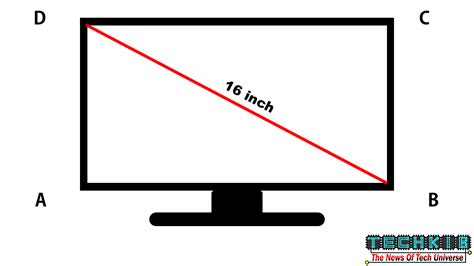How to Measure Monitor Size: A Comprehensive Guide
Choosing the right monitor size is crucial for productivity, comfort, and overall user experience. But how do you actually measure a monitor's size? It's not as simple as grabbing a ruler! This guide will walk you through various methods to accurately determine your monitor's dimensions, whether you're buying a new one or just curious about your current setup.
Understanding Monitor Size Measurement
The size of a monitor is almost always expressed in inches, and it refers to the diagonal measurement of the screen. This means the measurement is taken from one corner of the screen to the opposite corner, diagonally across. It does not refer to the width or height individually.
Method 1: Checking the Manufacturer's Specifications
The easiest and most reliable way to determine your monitor's size is to check the manufacturer's specifications. This information is typically found:
- On the monitor itself: Look for a sticker or label on the back or bottom bezel of the monitor. This often contains the model number and key specifications, including the screen size.
- In the user manual: If you still have the original packaging or can find the manual online, it will definitively state the monitor's size.
- On the manufacturer's website: Search for your monitor's model number on the manufacturer's website. Their product page will contain detailed specifications.
Method 2: Measuring with a Ruler or Tape Measure (Less Accurate)
If you can't find the specifications, you can attempt to measure the screen diagonally yourself. However, this method is less precise due to the bezel (the plastic frame surrounding the screen).
- Gather your tools: You'll need a ruler or tape measure, preferably a flexible one for better accuracy around curves.
- Measure diagonally: Carefully measure from one corner of the visible screen to the opposite corner. Try to be as accurate as possible.
- Account for the bezel: Remember, this measurement is slightly smaller than the advertised screen size due to the bezel.
Important Note: This method provides an approximate measurement and may not be entirely accurate.
Method 3: Using Software (For Existing Monitors)
Some software applications can detect your monitor's resolution and provide an estimated size. However, the accuracy depends on the software and the calibration of your system. This isn't a foolproof method for precise measurement.
Understanding Aspect Ratios
Monitor size isn't the whole story. The aspect ratio is equally important. This refers to the ratio of the width to the height of the screen. Common aspect ratios include:
- 16:9: This is the most common aspect ratio for monitors and televisions.
- 16:10: Offers a slightly taller screen, beneficial for productivity tasks.
- 21:9 (Ultrawide): Provides a significantly wider screen, ideal for multitasking and gaming.
Knowing the aspect ratio helps you understand the screen's proportions and how much usable space you have.
Choosing the Right Monitor Size
Once you've determined your monitor size, consider your needs and usage. Larger monitors provide more screen real estate, great for multitasking and productivity, but they might also require more desk space. Smaller monitors are more portable and suitable for travel but offer less screen space.
By using these methods, you can confidently determine your monitor's size and make informed decisions when purchasing a new one or optimizing your current setup. Remember, accurate measurement is key to a comfortable and productive workspace.
